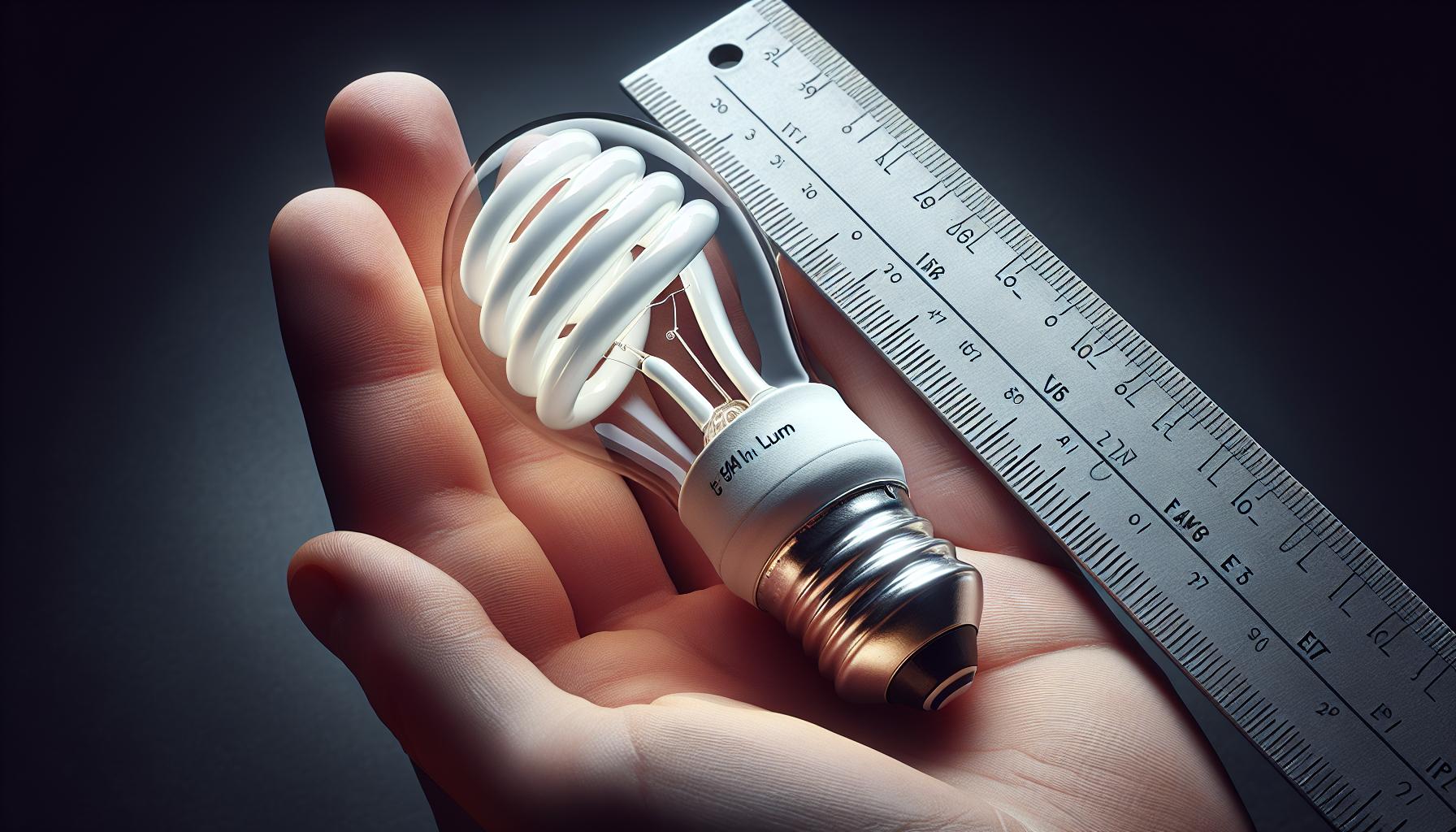Ever found yourself squinting into the fridge, wondering why it’s not as bright as it used to be? You’ve probably guessed it’s the light bulb, but then comes the million-dollar question: Can you just grab any old bulb from the drawer, or is there a special kind just for fridges? It’s a common conundrum, and you’re not alone in your pondering.

What is a fridge light bulb?
Delving into the charming world of refrigerator illumination, you’ll discover that fridge light bulbs are quite the specialized characters. Unlike their counterparts that bright up your room, these bulbs are designed to withstand colder temperatures and the frequent opening and closing of the fridge door. These robust little warriors are often smaller in size, yet they pack a punch with enough lumens to light up your midnight snack hunt.
Most fridges use a 15 to 40-watt bulb that emits a crisp, white light, ensuring that your food looks appetizing every time you peek inside. These bulbs are typically LED or incandescent but lean more towards LEDs lately due to their energy efficiency and longer lifespans.
Specific Requirements
When you’re replacing a fridge light bulb, you’re not just picking any bulb off the shelf. These bulbs need to be:
- Resistant to Low Temperatures: Regular bulbs might not perform well or could even burst in the chilly atmosphere of a refrigerator.
- Vibration Resistant: They must handle the frequent shakes and rattles from the fridge doors slamming shut.
- Dimmable: Some models have a feature where the light gradually brightens as the door opens.
Bulb Shapes and Sizes
Refrigerator bulbs come in different shapes and sizes, tailored to fit various models. Appliance bulbs are the most common and are designed to be compact enough to fit in the tight enclosure of your fridge’s light socket.
Here’s a quick glance at the usual bulb shapes for fridges:
- Tubular shapes typically for older models
- A15 or A19 for newer fridge types
- Candelabra base bulbs for specific designs
The wattage and size will prominently be mentioned on the packaging, so you can easily match it to your fridge’s requirements. It’s always smart to check your fridge’s manual or the old bulb for the correct specifications to ensure a perfect match.
With the primary focus on durability and efficiency, fridge light bulbs may seem small, but they’re crucial for a well-functioning kitchen. Next time your fridge bulb flickers out, you’ll know exactly what you’re looking for to bring back the light to your food’s home. Remember to handle these bulbs carefully and safely during replacement to keep your fridge lit and food visible.
Are fridge light bulbs different from regular bulbs?

Ever wondered if the light bulb in your fridge is the same as the lamp in your living room? While they might look similar at a glance, fridge light bulbs and regular bulbs have distinct differences that set them apart.
Key Differences:
- Temperature Endurance: Fridge bulbs are manufactured to endure lower temperatures. Regular bulbs aren’t designed to operate in cold environments and might not perform well or could even shatter if used inside a fridge. Fridge bulbs keep shining bright, even in the chill.
- Resistance to Vibration: Your fridge bulb also has to handle constant vibrations. Every time you pull open the door for a midnight snack, you’re sending a shockwave through the bulb. Fridge bulbs are built tougher to withstand this.
- Energy Efficiency: Often, fridge light bulbs are LED or energy-saving types as they need to conserve power given the 24/7 operational nature of refrigerators. Your regular household bulbs might not prioritize energy efficiency in the same way.
Size and Shape:
Fridge bulbs are often smaller to fit in the compact spaces of different fridge models. You’ve likely noticed that they come in various shapes too, from cylindrical to bullet-shaped, each designed to slot perfectly into its designated fridge space.
Lumens and Wattage:
Here’s where things can get tricky. You need a bulb that provides sufficient light without overpowering your late-night kitchen raids. Fridge bulbs are generally lower in both lumens and wattage compared to standard bulbs.
Switching Mechanism:
Fridge light bulbs work in tandem with a switch mechanism that activates the light only when the door opens. Regular bulbs typically use a wall switch and remain on or off until you decide otherwise.
So next time you’re rooting around your freezer in the dark because the light’s out, remember, your fridge bulb is more than just a mini version of your living room lamp—it’s a small beacon designed to brave the cold, the vibrations, and the dark, all while saving you energy.
Factors to consider when replacing a fridge light bulb
« How to Tell If Light Bulbs Are Dead: Quick & Easy Testing Tips
What Are the Best Light Bulbs to Use? Illuminate Your Space Efficiently »

When you’re in the market for a new fridge light bulb, don’t just grab any bulb off the shelf. The unique environment inside your fridge demands specific characteristics from a bulb that won’t just fit, but will also perform well over time.
Bulb Base Size
First things first, check the base of the bulb. Fridge bulbs often have a smaller base than regular household bulbs. You’ll typically find E14 or E17 bases in fridges, so make sure you’re picking the right one to avoid an unnecessary trip back to the store.
Wattage and Lumens
Remember that the wattage and lumens of fridge bulbs are lower than those of regular bulbs. Check your fridge manual or the existing bulb for the specifications. Sticking to the recommended wattage is not just about energy efficiency but also safety. Disregarding this can lead to malfunctions or even damage to your fridge.
Shape and Size
You’re working with limited space, so the size and shape of the bulb matter. Whether it’s tubular, candle, or traditional, the shape must be such that it fits snugly in its designated spot. Measure the current bulb or the holder dimensions if you’re unsure.
Robustness
Consider the robustness of the bulb, as it’ll need to handle the opening and closing of the fridge door. Look for bulbs labeled shock-resistant or those with reinforced filaments.
| Feature | Importance |
|---|---|
| Base Size | Must match the socket in fridge |
| Wattage | Corresponds with fridge specs |
| Lumens | Adequate for visibility |
| Shape & Size | Limited space accommodation |
| Robustness | Withstand vibrations |
Fridge life isn’t all chill and stillness; it’s a world of frequent motion and temperature extremes. Your bulb needs to show up and shine without a flicker of trouble. So take a moment to consider these aspects – they’re vital for maintaining that effortless glide from darkness to light every time you reach for a midnight snack or your favorite condiment.
Can any bulb be used as a replacement?

You might be tempted to just grab any light bulb from your junk drawer when the one in your fridge burns out. However, not all bulbs are created equal, especially when it comes to the ones in your fridge. Fridge bulbs are designed to handle low temperatures and moisture levels that would cause other bulbs to fail prematurely. Here are a few reasons why selecting the right bulb matters.
First off, remember those factors of base size, wattage, and lumens discussed earlier? They’re not just technical jargon. Your fridge’s bulb socket has a specific base size. Use a bulb with the wrong base and it simply won’t fit. Plus, using higher wattage than recommended can lead to overheating, which is a safety hazard and can also affect your fridge’s efficiency.
About lumens – that’s about the bulb’s brightness. Fridge interiors are small, and the light doesn’t have to travel far. Therefore, fewer lumens are required to illuminate the space effectively. A too bright bulb could create unwanted glare and could even raise the temperature inside the fridge ever so slightly.
There’s also the shape and size of the bulb to consider. Space is at a premium in there, with racks, drawers, and food items all competing for room. An oversized bulb could interfere with the closing of the fridge door or not fit in the housing properly, potentially damaging the fridge’s interior structure or the bulb itself.
Lastly, robustness can’t be overlooked. Regular household bulbs aren’t made to withstand the vibrations caused by the compressor motor. Over time, vibrations can damage a standard bulb’s filament. Fridge bulbs, meanwhile, are manufactured to endure this kind of rough treatment, allowing them to last longer under such conditions.
If you’re a DIY enthusiast or simply passionate about keeping your home running smoothly, understanding these differences will ensure that replacing your fridge’s bulb is a straightforward task. And remember, safety first – always unplug your fridge before attempting to replace the light bulb. It’s the little things that keep your home bright and functioning at its best.
Conclusion
So you’ve got the scoop on fridge light bulbs and how they’re not one-size-fits-all. Remember to match the bulb to your fridge’s specifications so it shines bright and lasts long. Double-check that base size wattage and shape to ensure you’re not left fumbling in the dark or squeezing in a bulb that just won’t fit. And don’t forget to give your fridge a little break by unplugging it before you make the switch. Stay safe and let there be light!
Frequently Asked Questions
What type of bulb is suitable for use in a fridge?
A suitable fridge bulb must handle low temperatures and moisture. Ensure it fits the socket, has the right base size, and appropriate wattage. Choose an appliance bulb specifically designed for fridges.
Can I use any LED bulb in my fridge?
Not all LED bulbs are suitable for fridge use. Select an LED bulb that is rated for the cold environment of a fridge, with the correct base size and low wattage to avoid electrical issues.
What wattage should my fridge light bulb be?
Refer to the fridge manufacturer’s specifications, but typically, a fridge light bulb is low wattage, often around 15 to 40 watts.
How do I know if a bulb has the right brightness for my fridge?
Brightness for fridge bulbs is measured in lumens. Look for a bulb that provides adequate brightness without glare, generally ranging from 200 to 300 lumens.
Why is the shape and size of the fridge bulb important?
The shape and size of the bulb are important to ensure it fits without obstructing closing of the fridge door or taking up storage space. Use a bulb shape that matches the original.
What does bulb robustness mean in the context of fridges?
Robustness refers to the bulb’s ability to withstand vibrations from the fridge compressor motor without failing. An appliance bulb designed for fridge use is usually more robust.
Should I unplug my fridge before replacing the light bulb?
Yes, for safety reasons, always unplug the fridge before replacing the light bulb to prevent electric shock.




